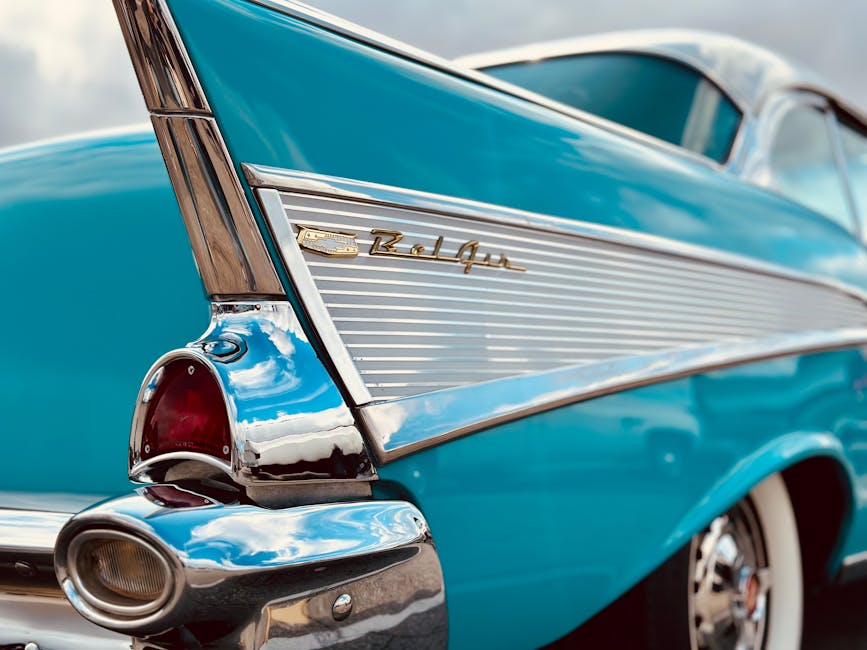Common Mistakes to Avoid in Chrome Car Restoration

Restoring the shine on cars with chrome can be an endeavor but it does pose its own set of challenges. Making mistakes during this process not consumes time and money but can also cause lasting harm to the vehicles exterior. Whether you're new to this or have experience in restoration work being aware of these pitfalls can help you avoid unnecessary headaches.
Inadequate Preparation
Proper preparation plays a role in chrome restoration. Many enthusiasts tend to overlook the significance of cleaning and prepping the surface before applying any products. Dirt, grease and rust can impede adhesion and affect the quality of the finish. Effective cleaning involves using cleaners to eliminate impurities and following up with a degreaser.
Another aspect often disregarded is sanding. Skipping or not performing this step adequately can result in a surface that impacts the final outcome. Using the right grit sandpaper typically starting with 400 grit and progressing up to 1000 grit ensures a foundation for applying chrome.
It's also crucial to mask off areas that don't need chrome treatment. Failure to protect these sections could lead to overspray in areas necessitating extra cleanup work. Utilizing high quality painters tape and plastic sheeting is effective, in preventing these issues.
Choosing Substandard Products
The market offers a range of chrome restoration products but their quality varies significantly.
Opting for expensive alternatives may initially save money but could result in inferior outcomes. The quality of primers, paints and clear coats is crucial. Trusted brands typically offer adhesion, durability and finish. It is wise to invest in products endorsed by industry professionals. For instance Eastwood and VHT are highly respected for their reliability in restoration endeavors.
Furthermore proper storage of these items is vital. Fluctuations in temperature can impact their consistency and performance. Keeping them in a dry place prolongs their shelf life and ensures optimal results upon application.
Improper Application Techniques
Applying chrome demands skill and meticulous attention to detail. Common errors include applying primer, paint or clear coat layers that're either too thick or too thin. Thick layers can result in runs and drips while thin layers might not offer coverage.
Maintaining a spraying technique is crucial. Holding the spray gun at the distance (typically 6 8 inches, from the surface) and moving it smoothly with even strokes helps achieve a uniform coat. Ensuring each pass overlaps by 50% guarantees complete coverage without streaks or lines.
Patience plays a role throughout this process.
Make sure each layer dries completely before moving on to the one to avoid issues like bubbling or peeling. Taking your time with each step is key to achieving a final outcome.
- Remember not to apply layers that're either too thick or too thin
- Keep your spraying technique consistent
- Allow for drying time between each layer for optimal results
When it comes to polishing and buffing these final steps really bring out the gleam in chrome restoration. It's crucial to use the tools and techniques, at this stage as many people underestimate their importance.
Using a high quality polishing compound specifically designed for chrome surfaces is a must. Applying pressure with the correct pad is essential to avoid creating swirl marks or scratches and achieve a smooth finish.
Don't forget about maintenance after restoring polished chrome. It needs occasional touch ups to maintain its shine. Using cleaning products and microfiber cloths can help keep the luster intact without causing any damage.When restoring chrome on cars it's important to avoid some mistakes that can affect the outcome. By focusing on surface preparation using high quality products applying techniques correctly and polishing effectively you can achieve professional looking results that last longer.
| Common Mistake | Impact | Solution |
|---|---|---|
| Poor Surface Preparation | Poor adhesion and finish quality | Thorough cleaning, degreasing, sanding |
| Using Low-Quality Products | Subpar results, reduced durability | Invest in reputable brands |
| Incorrect Application Techniques | Runs, drips, inadequate coverage | Consistent spraying technique, proper drying time |
| Ineffective Polishing/Buffing | Swirl marks, scratches, dull finish | Use appropriate compounds/pads, regular maintenance |
Taking the time to clean, degrease and sand the surface before starting the restoration process is crucial for ensuring good adhesion and a high quality finish. Opting for brands of products can lead to better outcomes with increased durability.
Applying consistent spraying techniques and allowing for drying time helps prevent issues like runs, drips or uneven coverage during the restoration process. This attention to detail contributes to a finish that enhances the overall appearance of the chrome.
Lastly investing effort in polishing and buffing should not be overlooked as it plays a role, in achieving a shiny and scratch free chrome surface. Using compounds and pads while regularly maintaining the polished chrome can help preserve its shine and luster over time.By adhering to these instructions at every stage of restoring a vintage car in chrome you will attain impressive results that endure without any unnecessary issues or letdowns.